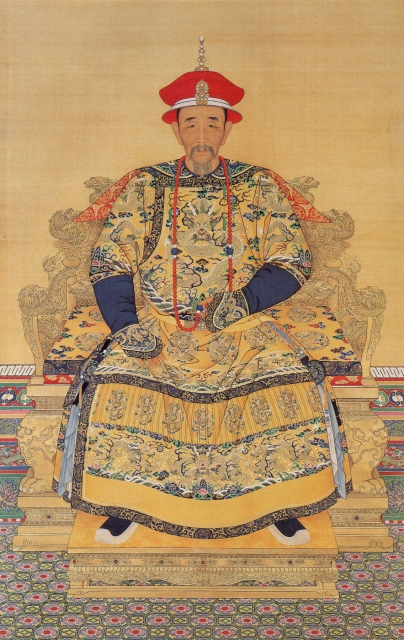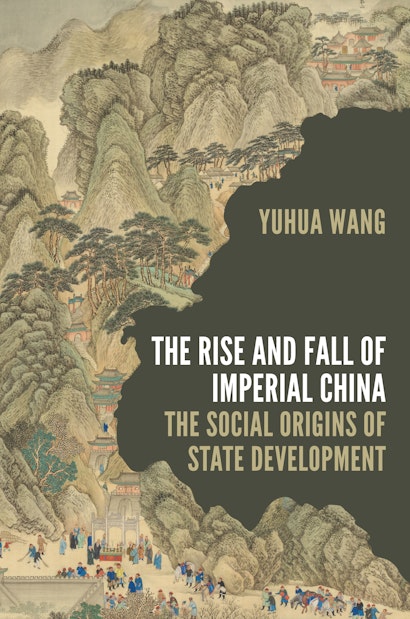In October 2022, during the 20th Party Congress of the Chinese Communist Party, Xi Jinping was “reelected” as the party’s chairman, paving his way for a third term as China’s top political leader. This will make Xi the longest-reigning head of state in the history of the People’s Republic—even longer than Mao Zedong, the founder of the regime, who was head of state from 1949 to 1959.
Are long-reining rulers a blessing or a curse to the country?
There were almost 300 emperors in Chinese history from the Qin Dynasty (221–207 BCE) to the Qing Dynasty (1644–1911). Emperor Modi of Jin (1234), the last emperor of the Jin Dynasty, ruled China for less than one day. The Kangxi Emperor (1661–1722), the third emperor of the Qing Dynasty, sat on the throne for 62 years. The fates of these rulers and their dynasties reveal important lessons that extend beyond their times.
A general trend is that Chinese emperors’ reigns were becoming increasingly insecure—before they became extremely secure. The probability of being deposed by elites increased to almost 50 percent in the late Tang Dynasty (618–907). The turning point occurred in the Northern Song Dynasty (960–1127). Emperors from the Song era onward were significantly less likely to be deposed, an indication that the rulers had strengthened their power vis-à-vis the elite. Chinese rulers enjoyed remarkably long tenures in the post-Song era. In the 18th century, the average reign of emperors reached almost 20 years—on par with European monarchs and far surpassing Islamic rulers in the same era.
However, ruled by long-living monarchs, the Chinese state gradually declined. Take fiscal strength as an example. In the early Song era, the Chinese government taxed over 15 percent of its economy. This percentage dropped to almost 1 percent during the Qing Dynasty.
Why did long-lasting emperors have to govern a weak state? This was a fundamental dilemma that all Chinese sovereigns faced; after all, a coherent elite that could take collective actions to strengthen the state was also capable of revolting against the ruler. To stay in power, rulers must divide and conquer the elite. Zeng Gongliang, the personnel minister during the Northern Song era, knew this the best. When Emperor Shenzong (1067–1085) promoted a group of reformers to strengthen the country’s fiscal and military capacities to confront nomadic threat, Zeng warned that “it is important to have people of different opinions stirring each other up, so that no one will dare to do wrong.” Emperor Shenzong followed Zeng’s wisdom to keep the opposition in power. This strengthened Shenzong’s control over the elite but sabotaged the reform. Northern Song was eventually defeated by the Jurchen Jin and retreated to the south.
Chinese rulers were not always able to divide and conquer. During the Tang times, an aristocracy ruled China. This aristocracy was a semi-hereditary caste that consisted of several hundred noble clans. These families formed a close-knit marriage network in which status endogamy persisted for centuries. Coherent aristocratic interests constituted a credible check on monarchical power by institutionalizing the office of the chief councilor, which was almost on a par with the emperor. It was a rare time in Chinese history when the emperor shared power with the elites. In the late Tang era, five of twelve Tang emperors were toppled by a coup; meanwhile, Tang China was the world’s dominant empire. Tang merchants structured trade relations with the outside world on the ancient “silk roads.” Japan was most deeply influenced by Chinese culture and institutions during this period, which shaped the fabric of the former’s state structure, laws and institutions, art, literature, and written language.
A rebellion in the late 9th century, led by the salt merchant Huang Chao, physically destroyed the Tang aristocracy and opened a new chapter in Chinese history. Starting in Song times, the emperors took advantage of the power vacuum left by the Tang aristocracy and restructured the elite. They expanded the civil service examinations to identify bureaucratic talent on a relatively meritocratic basis. With its competitiveness and focus on learning, the examinations brought selected members of local gentry families to the center and prevented them from forming a new aristocracy. The emperors exploited the fragmented and localized elite to establish an absolute monarchy at the expense of a much-contracted state. During this period, monarchical power greatly expanded while the Chinese state gradually weakened.
In the early 20th century, imperial China fell. It fell not because of the Western intrusion, such as the Opium Wars, nor because of internal rebellions, such as the Taiping Rebellion. Imperial China collapsed because the emperors’ relentless pursuit of power and survival through fragmenting the elites crippled the Chinese state and made it unable to respond to these external and internal challenges.
History does not repeat itself, but it rhymes. We are observing a new Chinese ruler who is trying to maximize his power and lengthen his rule. Some of the tactics he used, such as fragmenting the elite by breaking their networks, are directly borrowed from the emperor’s playbook. It is still too early to tell whether the Chinese state will decline, but the Chinese economy is already slowing down (even before the COVID-19 pandemic), and government officials are reluctant to initiate new development projects to avoid corruption inspections. A third term (and likely a fourth) might be good news for Xi. But if two thousand years of Chinese history tells us something, it is that the country often suffers from a ruler who refuses to leave.
Yuhua Wang is Professor of Government at Harvard University. His books include Tying the Autocrat’s Hands: The Rise of the Rule of Law in China.

